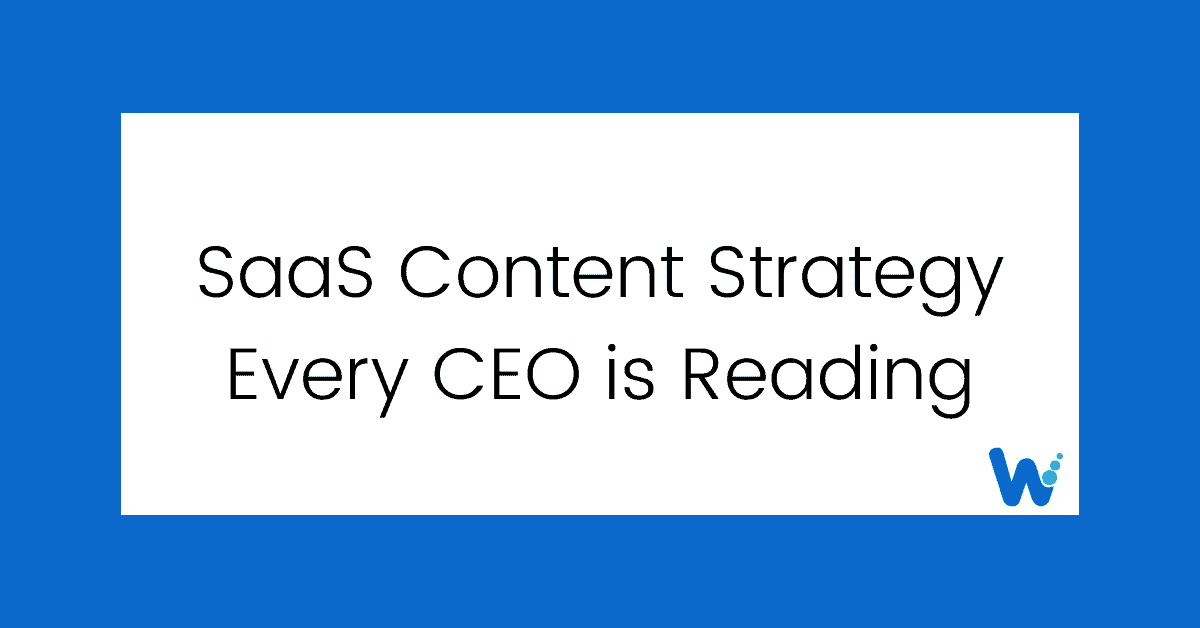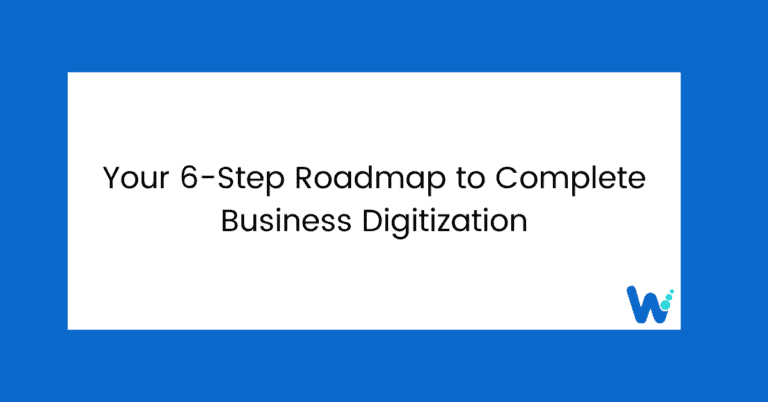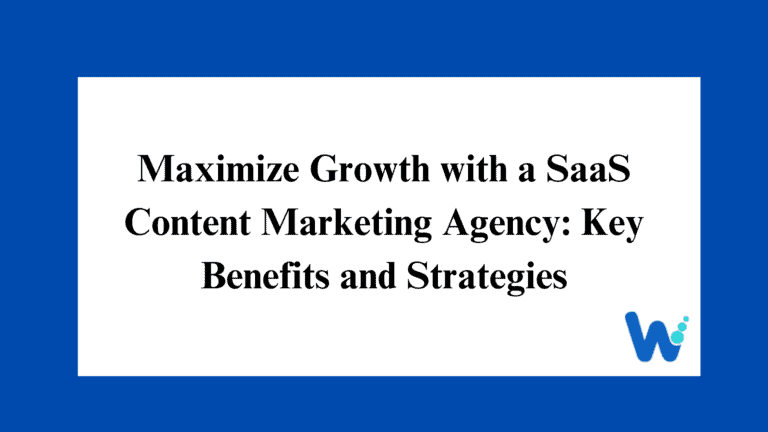You’ve probably heard about Software-as-a-Service, or SaaS for short. At its core, SaaS is about delivering software directly through the internet, instead of making users buy and install it from some physical medium. It’s simple, user-friendly, and has changed the game for countless businesses. From managing finances to graphic design, there’s a SaaS solution for almost everything these days.
But with so many SaaS companies popping up left and right, standing out in the crowd becomes a challenge. This is where content marketing enters the picture.
Imagine you’re browsing online for a tool to help manage your team’s projects. You stumble across a website that not only offers a tool but also provides insightful articles on team productivity, how-to guides on project management, and video tutorials for their software. You’re likely to stick around, right? That’s the power of content marketing. It’s about giving value upfront, showcasing expertise, and building trust with potential users.
Saas content marketing is more than just a strategy—it’s a necessity. With the industry being so tech-focused, there’s always a need to break things down, educate users, and show them the true potential of a software solution. Content marketing does just that.
Throughout this guide, we’re going to dive deep into how SaaS businesses can effectively use content to connect with their audience. We’ll look at the ins and outs, best practices, and even some pitfalls to avoid. Whether you’re new to the SaaS industry or looking to amp up your content game, stick around. This is going to be insightful!
The Current Landscape of SaaS Content Marketing
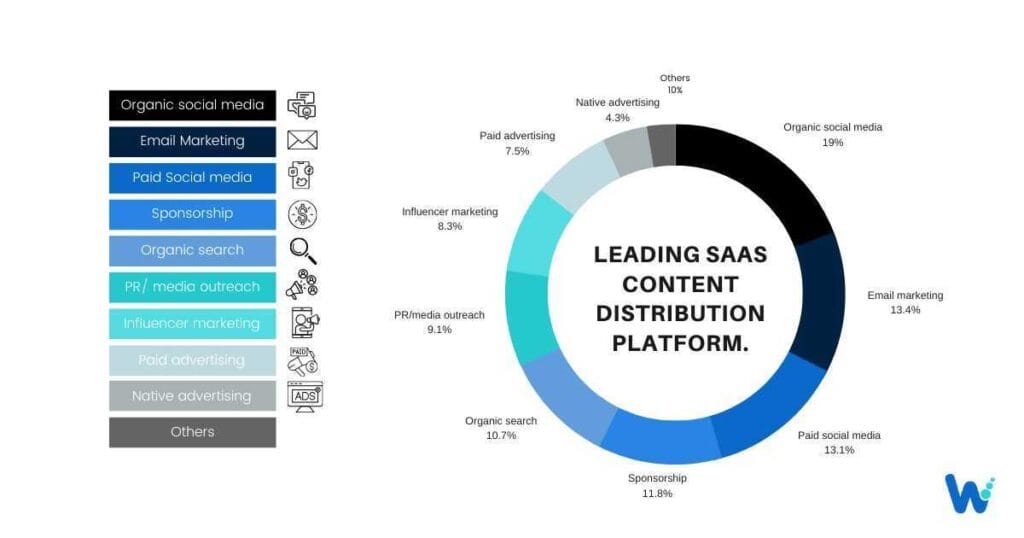
In the earlier days of the software industry, marketing strategies were more traditional, often leaning on direct sales, print advertisements, and software demos. Software as a Service (SaaS), a relatively new concept, began to change how software companies approached their markets. With its subscription-based model and online delivery, SaaS products inherently required a new approach to marketing—one where trust, education, and continuous customer engagement became important.
Initially, the content team of SaaS companies used basic blogs and articles to address common user concerns and promote their features. Over time, this evolved. The blogs became more sophisticated, offering in-depth guides, how-to articles, and customer stories. The content marketing agencies started using webinars, podcasts, and instructional videos to provide users with a variety of formats to consume content.
SaaS giants like HubSpot and Salesforce were among the early adopters of content marketing. They recognized the power of good content ideas and started providing valuable content to their audience, not only for attracting potential customers but also for retaining existing ones. HubSpot, for instance, has been particularly influential in defining inbound marketing, a strategy heavily reliant on content.
As the SaaS industry matured, so did its approach to content marketing. Today, it’s not just about producing content—it’s about producing the right content type tailored to specific segments of the audience and stages of the customer journey.
Current Trends and Notable Players in the Field
Fast forward to today, and SAAS content marketing has become a staple for SaaS businesses, both big and small.
But with so many players in the game, how do you stand out?
Let’s take a look at some of the current trends:
- User-generated content (UGC): The content team of SaaS companies are leveraging reviews, testimonials, and case studies from their users through online communities. This not only builds trust but also provides real-world examples of how their product adds value.
- Interactive content: Content formats in the form of tools like quizzes, calculators, and interactive infographics make content more engaging and can often drive higher user interaction.
- Personalized content experiences: With advancements in AI and machine learning, SaaS companies have now maintained a good position in the marketing funnel. Depending on a visitor’s behavior, history, or profile, the types of content they see might differ, making it more relevant to their needs.
- Thought leadership: The marketing teams of companies are investing more in producing in-depth research, white papers, and opinion pieces that position them as leaders in their niche.
Among the notable players making waves with their content marketing strategies, we have:
- Slack: Their blogs and case studies showcase real-life examples of teams using their platform, making it relatable and aspirational for ideal customers.
- Airtable: They offer an extensive library of templates, webinars, and guides that not only promote their product but also educate users on broader topics like project management and content strategy.
- Trello: Their content is user-centric, focusing on productivity tips, team collaboration, and, of course, how Trello can be a part of that.
SaaS industry has seen a significant shift in how it approaches smart goals of content marketing. From basic blogs to sophisticated, personalized content experiences, it’s clear that content will continue to play a crucial role in attracting and retaining target customers.
Understanding the SaaS Customer Journey
The customer journey, especially in the SaaS industry, is a multi-stage process. Understanding this journey is essential to tailoring content and interactions that guide potential customers towards a purchase. Let’s break down the stages of content marketing goals and delve into what each of them entails.
1. Awareness: Making Potential Clients Aware of Their Problem
Before a potential client even thinks about solutions, they must first recognize they have a problem. At this initial stage, your depth content should be focused on identifying common pain points or challenges that businesses or individuals might face.
For example, a company may be struggling with team communication but hasn’t pinpointed that as the issue yet. Pieces of content like articles titled “Top Signs Your Team Has Communication Gaps” or infographics highlighting statistics on team productivity can help potential clients connect the dots.
In the SaaS context, it’s crucial at this stage to be educational and not overly promotional. The goal is to resonate with the audience’s challenges, making them think, “This is exactly what I’m experiencing!”
2. Interest: Engaging Potential Clients with Brand Solutions
Now that they’re aware of their problem, potential clients start looking for solutions. This is where the content marketers put their SaaS product as a potential answer to their challenges.
Content from the content calendar that works well in this stage includes product teasers, introductory videos, or webinars that showcase basic features. For instance, a project management SaaS might publish an article on “How a Digital Solution Can Streamline Your Project Management Process.”
Interactive demos or free trials are also powerful tools in this phase. They allow potential clients to get a hands-on feel for your solution, nudging them closer to the next stage of the journey.
3. Consideration: Detailed Insights into Solutions for an Informed Choice
At this stage, potential clients are actively comparing different solutions to decide which fits best. They need detailed, in-depth information about what you offer compared to competitors.
Content that highlights unique selling points (USPs), comprehensive product walkthroughs, or comparison charts can be invaluable. Case studies are particularly powerful, as they showcase real-world applications and results of your SaaS product.
For a CRM SaaS, for instance, a guide titled “Choosing the Right CRM: Features to Look Out For” can provide readers with a checklist of essential features, subtly hinting at how the SaaS product meets these needs.
4. Conversion: Turning prospective customers into Paying Customers
The conversion rate is the final and most crucial stage. Target customers are on the brink of becoming paying clients, but they might need that final push. At this point, the best way to elongate the conversion funnel is to educate less and convince more.
Effective content type for this stage includes special promotions, limited-time offers, internal links, or testimonials from satisfied customers. Content ideas like highlighting customer support, security features, and money-back guarantees can also get relevant traffic.
For example, an accounting SaaS might send an email with a limited-time discount code or a video testimonial from a well-known brand discussing how the software transformed their finance processes. These strategies emphasize the benefits of committing now, driving the potential client to make the purchase.
Understanding and catering to the SaaS customer journey is about being at the right place, with the right message, at the right time. Each stage requires specific content tailored to the potential client’s mindset, guiding them smoothly from one phase to the next. By doing this effectively, SaaS companies can ensure a consistent stream of conversions and happy customers.
Key Elements of SaaS Content Marketing
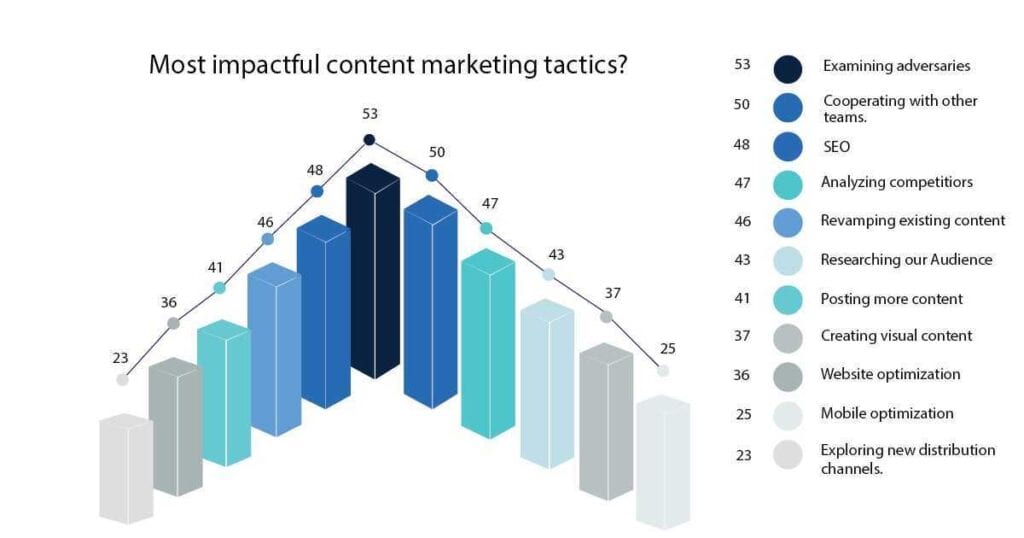
Content marketing strategies for SaaS companies are distinct from other industries. It’s about more than just promoting a product; it’s about sharing knowledge, establishing authority, and building trust. Let’s explore some of the key elements that the content strategist follows to make SaaS content marketing shine.
1. Educational Content: Importance of Educating Potential Users
For many SaaS products, there’s a learning curve involved. Potential users might not be familiar with the specific solutions you’re offering, or even the broader issues that those solutions address. That’s where educational content comes in.
An educational detailed content can help bridge the knowledge gap, providing potential users with the context they need to understand and appreciate the value of your product. This value-added content contains insights, tips, and best practices, so you position your brand as a trusted resource.
For instance, a cloud-based storage solution might offer a series of articles on data management best practices, the importance of secure storage, and the risks of not having a backup system in place.
The goal is not to directly promote the product, but rather to empower and inform the audience. This way, when they’re ready to look for a solution, your brand will be top of mind.
2. Blogging: Creating a Blog Strategy to Drive Organic Traffic
Blogging remains one of the most effective ways to attract organic traffic. A well-maintained blog can boost your SEO, help you rank for key search terms, and bring potential users directly to your site.
However, it’s not enough to just blog randomly. A strategic approach is essential. Identify key topics and search terms relevant to your industry and audience. Regularly update the blog with fresh, relevant content. Ensure posts are well-researched, authoritative, and offer real value to readers.
For a marketing automation tool, for example, you could cover topics like “Effective Email Campaign Strategies” or “How to Segment Your Audience for Better Results”.
Remember, each blog post is an opportunity to establish your brand’s voice, showcase expertise, and directly address the needs and interests of your potential users.
Blogging remains one of the most effective ways to attract organic traffic. A well-maintained blog article can boost your Search engine optimization, help you rank for key search terms, and bring potential users directly to your site.
However, it’s not enough to just blog randomly. An SEO strategy is essential. Identify keyword ideas and search terms relevant to your industry and audience. Regularly update the blog with fresh, relevant content. Ensure that the actual content is well-researched, authoritative, and offers real value to readers.
For a marketing automation tool, for example, you could cover topics like “Effective Email Campaign Strategies” or “How to Segment Your Audience for Better Results”.
Remember, each blog post is an opportunity to establish your brand’s voice, showcase expertise, and directly address the needs and interests of your potential users.
3. Videos: Use of Webinars, Tutorials, and Testimonials
Video content is more compelling than ever. It offers a dynamic way to engage with potential users, showcase product features, and share success stories.
Webinars: A live session can be an excellent way to introduce your product, discuss its features, and answer questions in real-time. It’s interactive and allows for immediate feedback.
Tutorials: These step-by-step guides show users how to get the most out of your product. They can be invaluable for onboarding new users and demonstrating the practical value of your SaaS solution.
Testimonials: Real-world stories from satisfied customers can be persuasive. It’s one thing to claim your product is great; it’s another to have real users back up that claim with their experiences.
4. Whitepapers & E-books: Detailed Insights, Trends, and Future Projections
While blog posts and videos can provide a surface-level introduction to topics, sometimes potential users are looking for a deeper dive. That’s where whitepapers and e-books come in.
These longer-form content pieces can explore topics in depth, backed up with research, case studies, and expert insights. They’re also excellent lead magnets – by offering a valuable resource in exchange for contact information, you can grow your email list and nurture potential leads.
For a SaaS company offering AI solutions, a whitepaper might delve into “The Future of AI in Business: Predictions for the Next Decade”, offering readers detailed insights into emerging trends and how businesses can prepare.
To sum it up, successful SaaS content marketing is multifaceted. It’s about meeting potential users where they are, providing the information they need in the format they prefer, and guiding them towards a deeper relationship with your brand. By leveraging educational content, blogging, videos, and in-depth resources like whitepapers and e-books, you can create a comprehensive strategy that drives results.
Tools and Platforms to Aid SaaS Content Creation
Content creation for SaaS companies involves more than just writing. It’s about creating a comprehensive package – from engaging written content and eye-catching graphics to deep analytics that inform your strategy. Thankfully, a host of tools and platforms can make the job easier. Here’s a breakdown of some of the best in the business.
1. AI Writing Tools: Simplify and Streamline Content Creation
In the era of AI, content creation has become more streamlined. AI writing tools can generate ideas, suggest edits, and even draft content.
Koala Writer: Koala AI Writer is a dynamic platform that offers content suggestions, outlines, and data-driven content enhancements. But for SaaS companies looking to create vast amounts of authoritative content, such tools can be invaluable but we recommend working with human creators for authoritative content.
Others: Platforms like Grammarly utilize AI to improve content readability and correct grammar. OpenAI’s GPT-4, the AI model you’re interacting with right now, can assist in drafting and improving content across various niches.
2. Design Tools: Making Your Content Visually Appealing
Visual content enhances readability and engagement.
Canva: With its user-friendly interface, Canva makes design accessible to everyone. From social media graphics to detailed reports, it offers templates and tools for almost every need.Adobe Suite: For a more professional touch, the Adobe Suite – including Photoshop, Illustrator, and InDesign – provides advanced design tools. These are especially useful for brands looking to maintain a unique and consistent visual identity.
3. Analytics: Understanding Your Audience and Performance
To refine your content strategy, understanding audience behavior and content performance is key.
Google Analytics: A staple for most online businesses, Google Analytics offers insights into website traffic, user behavior, and content engagement, helping you understand what’s working and what’s not.
SEMrush: Beyond website analytics, SEMrush provides comprehensive SEO insights, allowing SaaS companies to optimize their content for search engines and better understand their competition.
4. Automation Tools: Efficient Content Delivery and Engagement
Efficiency is crucial in SaaS content marketing. Automation tools ensure timely content delivery and can help nurture leads.
MailChimp: An intuitive email marketing platform, MailChimp lets businesses automate email campaigns, segment their audience, and analyze performance.
HubSpot: Beyond email, HubSpot offers a suite of inbound marketing tools, including CRM integration, landing page creation, and content scheduling.
5. Content Agency: A Partner in Your Content Journey
Sometimes, you need a helping hand. That’s where content agencies like Wordscloud come into play. With a rich history of working with tech giants, Wordscloud has carved a niche in understanding the unique needs of SaaS content marketing. As the proud owner, I’ve seen firsthand the transformative impact of high-quality, targeted content. Our team is adept at capturing the nuances of SaaS, ensuring that our partners always put their best foot forward in the competitive digital landscape.
In the fast-evolving world of SaaS, having the right tools and partners can be the difference between content that shines and content that fades into the background. Whether you’re a startup or an industry giant, these tools and platforms offer a pathway to content excellence.
Distribution and Promotion Strategies for SaaS Content Marketing
Creating high-quality content is just half the battle; distributing it effectively is equally crucial. In the SaaS industry, where competition is fierce, it’s important to have a powerful content distribution strategy in place. Here’s an in-depth look at the various channels through which SaaS companies can amplify their content, along with a sprinkle of inspiring success stories.
1. Owned Channels: The Home Ground Advantage
These are platforms or channels that a business owns and has complete control over.
Blogs: The primary platform for many SaaS companies. Regularly updating your blog with valuable content can help improve SEO, drive organic traffic, and establish your brand as an industry leader.
Mailing Lists: Email newsletters offer a direct line to your audience. By segmenting your list and tailoring content to different audience groups, you can increase engagement and drive targeted traffic to your site.
Social Media Accounts: Platforms like LinkedIn, Twitter, and Facebook allow SaaS companies to share content, engage with their audience, and promote brand values. Regular posts, stories, and updates can keep your audience engaged and informed.
2. Earned & Shared Channels: Leveraging External Platforms
These channels belong to third parties but can be accessed to increase visibility.
Guest Posts: Writing articles or blog posts for reputable industry sites can not only drive traffic but also establish your brand’s authority in the industry. We have connections with thousands of bloggers & marketers, we can help you in publishing your guest posts. You can schedule a call anytime to discuss this in details.
Forums: Platforms like SaaS-specific subreddits or Quora spaces can be goldmines. Engaging genuinely, answering questions, and sharing insights can boost brand awareness and trust.
News Websites: Getting featured or mentioned on prominent news sites can massively increase visibility and lend credibility to your brand.
3. Paid Channels: Investing for Visibility
Sometimes, organic reach might not be enough, especially in competitive niches.
Social Media Ads: Platforms like
PPC: Pay-per-click campaigns, especially on platforms like Google Ads, can drive significant targeted traffic to your SaaS platform or content.Influencer Partnerships: Collaborating with industry influencers can help your content reach a broader audience, especially if they have a significant following in the SaaS space.
4. SaaS Content Success Stories
Inspiration can often be drawn from those who’ve done it right.
- LinkedIn: A platform like Typeform has leveraged LinkedIn’s potential with live video content, amassing a significant following and ensuring high engagement.
- Instagram: , with its impeccable Instagram strategy, has garnered over a million followers, effectively using stories and reels to engage with a vast audience.
- Quora: Cloud Daily, with its consistent posting strategy, has built a community of over 380,000 followers, showcasing the power of genuine engagement on a platform like Quora.
- Reddit: Numerous SaaS companies have tapped into niche-specific subreddits, sharing valuable insights and fostering genuine community interactions, resulting in enhanced brand visibility and trust.
The distribution of content in the SaaS industry is as crucial as its creation. By leveraging a mix of owned, earned, shared, and paid channels, and by drawing inspiration from those who’ve mastered the art, SaaS companies can ensure their content resonates, engages, and drives results.
Challenges in SaaS Content Marketing & Overcoming Them
The SaaS industry, while ripe with opportunities, is not without its hurdles, especially in the content marketing domain. Let’s delve deep into some of these challenges and uncover strategies to tackle them effectively. Plus, we’ll explore how partnering with a seasoned content agency like WordsCloud can make the journey smoother.
1. Complexity of the SaaS Solution
Challenge: SaaS solutions, by nature, can be intricate. Explaining these intricate systems in simple terms, without jargon, is a challenge.
Solution: Content should focus on the problem the software solves rather than its technicalities. Using analogies, relatable examples, and visual aids can help demystify complex solutions. Interactive content, like quizzes or calculators, can also engage users and help them understand the product’s value.
2. Educating Potential Users
Challenge: With new technologies and features evolving rapidly, educating potential users about the benefits and usage of a SaaS product can be demanding.
Solution: Host webinars, create tutorial videos, and craft step-by-step guides. Infographics and cheat sheets can also be helpful. Emphasize the benefits and real-world applications of your software.
3. Longer Buying Cycles
Challenge: SaaS purchases, often being of higher value and commitment, typically involve longer decision-making processes.
Solution: Consistent and valuable content is the key. Nurture leads through the sales funnel with targeted content for each stage, from awareness to conversion. Personalized email sequences can also help in guiding potential clients through the decision-making process.
4. Competitive Market & Staying Ahead
Challenge: The SaaS landscape is densely populated, with numerous companies offering similar solutions.
Solution: Differentiate through your content. Share success stories, case studies, and unique insights that highlight your product’s USP. Conduct regular competitive analyses and stay updated with industry trends to ensure your content remains relevant and fresh. Hosting webinars with industry experts or creating collaborative content can further cement your position as a leader.
5. Solutions and Strategies to Overcome These Challenges
Regular feedback loops, user surveys, and analytics can provide insights into what your target audience wants. Encourage user-generated content to boost authenticity. Keep iterating your strategy based on performance metrics and evolving market demands.
Measuring Success in SaaS Content Marketing
Every SaaS company knows that content marketing is crucial. But how do you determine if your efforts are paying off? Measuring success in SaaS content marketing isn’t just about tracking metrics; it’s about understanding which metrics truly matter. Here’s a guide to pinpointing the indicators of successful SaaS content marketing.
1. Key Performance Indicators (KPIs) for SaaS Content
KPIs provide quantitative measures to evaluate success against objectives. For SaaS content marketing, these indicators help track the effectiveness of content in driving desired actions and achieving business goals.
- Traffic and Engagement: Monitor the number of visitors to your content. High traffic indicates that your content is attracting attention. Also, consider metrics like page views, time spent on the page, and bounce rate to gauge engagement.
- Lead Generation: For many SaaS companies, the end goal is conversion. Track metrics like new subscriptions, trial sign-ups, and content downloads (e.g., e-books, whitepapers).
- Social Shares and Comments: Engagement on social platforms indicates the shareability and resonance of your content.Search Engine Rankings: If your content ranks high on search engines for targeted keywords, it shows that your SEO efforts are successful and your content is deemed valuable.
2. Understanding ROI of Content Marketing
Return on Investment (ROI) is a critical metric for any business activity. In the context of content marketing:
To compute this:
ROI = (Net Profit from Content – Cost of Creating Content) / Cost of Creating Content
Calculate the Cost: Factor in content creation costs, promotional expenses, tools and software used, and any other associated costs.
Estimate the Net Profit: This can be derived from the total revenue generated through leads from content minus the associated costs.
For instance, if you spent $5,000 on content creation and promotion and generated leads worth $20,000, your ROI would be 300%.
Evaluating ROI helps in determining if your content marketing strategy is financially viable and guides future budget allocations.
3. Tools to Measure Content Success and Conversions
Using the right tools can simplify the tracking process and offer deeper insights.
🌐 GA4:
🚀 It’s a comprehensive platform for tracking website traffic, user behavior, conversions, and much more.
📊 Monitor metrics like page views, referral sources, and goal completions.
🔍 SEMrush:
📈 Beyond just tracking keyword rankings, SEMrush offers insights into backlinks, competitive analysis, and even site audits.
🎯 HubSpot:
🛠️ An all-in-one marketing platform that tracks leads, measures website performance and offers insights into your content’s performance in the sales funnel.
🔥 Hotjar:
👁️ It provides visual heatmaps, showing where users click, move, and scroll. This is great for understanding user behavior on your site.
⚙️ Conversion Rate Optimization (CRO) Tools:
🧪 Platforms like Optimizely or Unbounce allow you to A/B test content to see what resonates more with your audience.
Measuring success in SaaS content marketing goes beyond just vanity metrics. Dive deep into KPIs, truly understand your ROI, and employ the right tools to measure and optimize. Remember, it’s not about creating content; it’s about creating content that works.
Interested in reading more about technical blogs ? Checkout scribblersden
The Future of SaaS Content Marketing in 2023
Content marketing for SaaS has been a game-changer, acting as the silent workhorse behind many success stories. But as we glance into the future, what does the trajectory look like? Let’s dive into the predictions, the increasing role of AI, the undeniable importance of community, and what the future holds for our valued SaaS clients.
1. Predictions on Upcoming Trends
As technology evolves and consumer behaviors shift, here are some predictions for the future of SaaS content marketing:
Personalization: Customized content experiences will no longer be a nice-to-have but a necessity. Instead of one-size-fits-all, content will be tailored to individual user preferences and behaviors.
Interactive Content: From quizzes to interactive videos, engaging the user will be paramount. This trend emphasizes real-time feedback and engagement.
Voice Search & Smart Assistants: With the rise of smart speakers and voice assistants, optimizing content for voice search will be essential.
2. Role of AI and Machine Learning in SaaS Content
Artificial Intelligence (AI) and Machine Learning (ML) aren’t just buzzwords; they’re set to revolutionize content marketing.
Data Analysis: ML can analyze vast amounts of data to glean insights about what content works and what doesn’t, allowing for real-time optimization.
Customer Journeys: AI can map out and predict the optimal content journey for different user segments, ensuring they get the right content at the right time.
3. Importance of Community Building and Engagement in Future Strategies
Building a community is no longer a sideline strategy. Brands that foster communities enjoy higher loyalty, better feedback, and increased user-generated content.
Forums & Groups: Platforms like Discord or Slack will allow SaaS companies to foster closer ties with their users.
User-Generated Content: Encourage users to share their success stories, tips, and tricks. Not only does this provide fresh content, but it also boosts trust.
4. Our Future Plans for Our SaaS Clients
At Wordscloud, we’re not just looking at the next quarter; we’re looking at the next decade. Our commitment to our SaaS clients remains unwavering.
- AI-Powered Insights: We’re investing in AI-driven tools to offer even more precise content strategies tailored to your unique audience.
- Community Building: We plan to offer community management as a service, helping our clients cultivate and nurture their user communities.
- Continued Education: As the SaaS landscape evolves, so will our knowledge base. We promise to keep you, our valued clients, ahead of the curve with the latest strategies and insights.
Future of content marketing in the SaaS world is exciting, brimming with potential, and ever-evolving. At Wordscloud, we’re here to ensure you harness that potential and stay at the forefront of innovation.
We’ve taken a close look at the role of content marketing in the world of SaaS. From start to finish, it’s clear that good content isn’t just nice to have—it’s essential.
If your content strategy hasn’t been working as well as you hoped, or if you’ve been doing the same thing for a while, maybe it’s time for a change. A fresh approach or a new plan might be just what you need to connect with your audience.
Did this article help you see things differently? We’d love to know! Your thoughts and feedback help us create better content for you. And if you think this guide might help others, feel free to share it.
Here’s a final thought:
“Every blog post, video, or social media update is a chance to connect with someone. Don’t miss out on these opportunities. Plan, create, and keep improving.”
Want to make your content even better?
Let’s dive in and make some changes today. Refresh your content approach, stay updated with new trends, and see how your SaaS business grows.
Let us know what you think. Share your ideas, or just tell us if this article pointed you in the right direction. We’re all in this together, working to make SaaS content marketing better for everyone.
FAQs
What is SaaS content marketing?
SaaS content marketing is a strategy where Software as a Service (SaaS) companies create and share relevant content to attract, educate, and convert their target audience into paying customers. It’s centered on providing value through content, which often addresses the unique challenges and needs of potential SaaS users.
What is SaaS in content writing?
In content writing, “SaaS” refers to the subject matter – Software as a Service. Articles, blogs, and other pieces of content that focus on SaaS discuss cloud-based software solutions that users access online rather than traditional software that’s downloaded.
What are the benefits of SaaS content marketing?
Benefits include establishing authority in the industry, educating potential customers, driving organic traffic, nurturing leads, and increasing conversions and customer retention.
What is SEO in SaaS?
SEO in SaaS is the practice of optimizing a SaaS company’s online content so it’s more visible to search engines. The goal is to attract organic (non-paid) traffic from potential users searching for SaaS solutions or related information.
How to do SEO for SaaS business?
SEO for a SaaS business involves keyword research to identify terms potential users might search for, optimizing website content and structure, building quality backlinks, and ensuring a mobile-friendly user experience. It’s essential to understand the unique challenges and questions of the SaaS audience and answer them effectively.
How is SaaS SEO different from traditional SEO?
While the foundational principles are the same, SaaS SEO often focuses on industry-specific terms, emphasizes user education, and targets a more niche audience compared to broader, traditional SEO practices.
How SaaS marketing is different from every other type of marketing?
SaaS marketing addresses the unique challenges of marketing a cloud-based service rather than a physical product. It emphasizes educating potential users, offers often involve trials or demos, and customer retention is a significant focus given the subscription-based nature of SaaS.
Why SEO is better than other marketing?
SEO offers long-term organic visibility, leading to a higher ROI over time compared to paid advertising. With SEO, businesses can build trust and authority, reach a targeted audience actively searching for solutions, and achieve sustained growth. However, it’s important to integrate SEO with other marketing strategies for best results.

